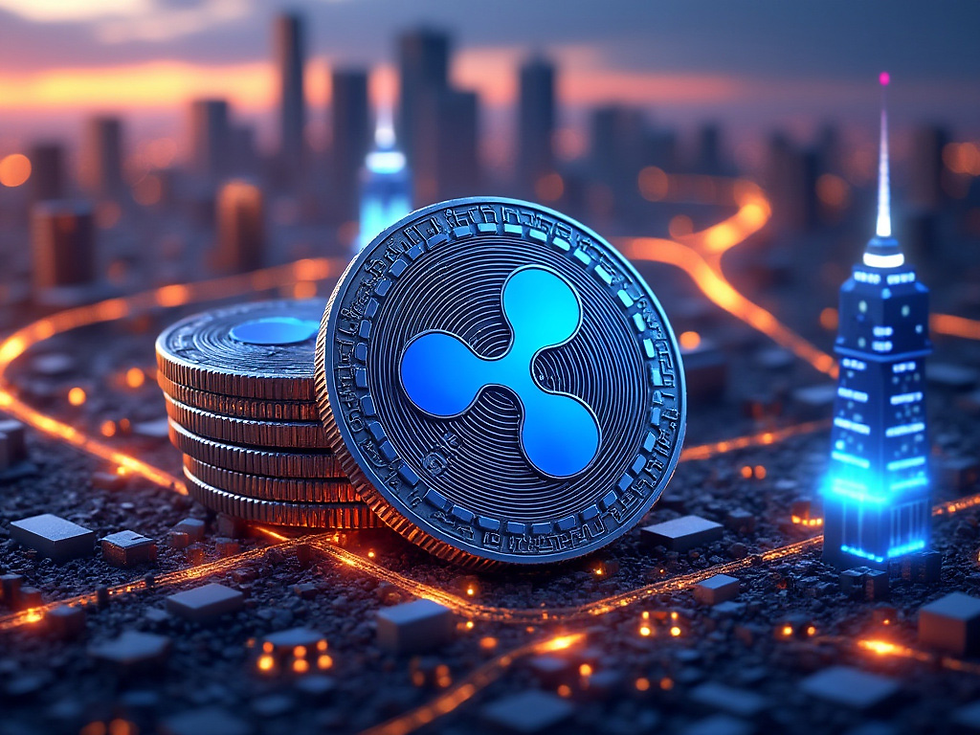XRP’s Role in Tokenizing the World: From Remittances to Real Estate
- Lilly Mackani

- 23 hours ago
- 3 min read

In the rapidly evolving digital economy, XRP is emerging as one of the most powerful tools for tokenization—the process of converting real-world assets into digital tokens on the blockchain. What began as a project to revolutionize cross-border payments has now expanded into a much broader mission: enabling the tokenization of money, commodities, real estate, and even global remittances.
XRP and the Evolution of Remittances
Remittances remain one of the strongest use cases for XRP. Each year, over $626 billion in remittances flow worldwide, much of it burdened by high transaction fees, slow settlement times, and intermediaries that cut into what families ultimately receive. With its high-speed, low-cost settlement capability, XRP provides a seamless alternative.
Through RippleNet’s On-Demand Liquidity (ODL), powered by XRP, funds can move across borders in seconds instead of days—transforming the way migrant workers send money home. For millions of families relying on remittances for survival, this shift from expensive intermediaries to instant blockchain-powered settlements could be life-changing.
Tokenization Beyond Money
While remittances and payments remain at XRP’s core, the vision has expanded far beyond finance. Ripple and its ecosystem of developers are now embracing tokenization as the next frontier, using XRP Ledger (XRPL) as the foundation for digitizing assets.
Imagine a world where real estate deeds, commodities, carbon credits, and even music royalties exist as tradeable tokens on a transparent, global blockchain. This is no longer a futuristic concept—it’s already happening. The XRPL, with its ability to support tokenized assets natively, is enabling companies and institutions to securely digitize ownership of physical and financial assets.
Real Estate on the XRPL
One of the most transformative examples lies in real estate tokenization. The global real estate market is valued at over $300 trillion, making it the largest asset class in the world. Yet, it remains highly illiquid, fragmented, and often inaccessible to average investors.
By using the XRPL, properties can be tokenized and fractionalized, allowing investors from across the globe to buy and trade portions of real estate seamlessly. This opens doors for small-scale investors who could never access prime markets before, while also unlocking liquidity for property owners. Tokenization ensures greater transparency, lower entry barriers, and faster settlement—a true game-changer for the industry.
A recent breakthrough highlights this shift: RealFI has officially launched the REAL token on the XRP Ledger as of June 7th, 2025. This initiative marks a pivotal moment in global real estate, as RealFI begins tokenizing the $654.39 trillion real estate market. Built on the high-speed, low-cost XRPL, the REAL token is designed to bring efficiency, transparency, and accessibility to real estate transactions worldwide.
With a capped total supply of 100,000,000 REAL tokens, this finite digital asset will serve as a universal Real Estate Currency, supporting everything from rent payments to full property purchases. By digitizing ownership and enabling fractional transactions, RealFI is not only enhancing liquidity but also redefining the future of real estate through blockchain innovation.
The Bigger Picture: XRP as the Bridge
At its heart, XRP serves as a bridge currency, but its role in tokenization extends much further. It connects traditional finance with blockchain innovation, linking global remittances, institutional money, and real-world assets into one interoperable system.
The XRPL’s design—fast, scalable, and eco-friendly—makes it the ideal backbone for this new tokenized economy. Whether it’s enabling a worker in Dubai to instantly send funds to any country or facilitating fractional ownership of a luxury condo in New York, XRP is positioning itself as the digital asset at the center of the global shift to tokenization.
Conclusion
From its origins in revolutionizing remittances to its expanding role in real estate and asset tokenization, XRP is driving a fundamental shift in how value is transferred, stored, and owned. The launch of RealFI’s REAL token on XRPL underscores just how significant XRP’s infrastructure has become in building the tokenized future.
As the world moves toward a tokenized economy, XRP’s real strength lies in its ability to bridge the old with the new—unlocking access, liquidity, and efficiency on a global scale.



